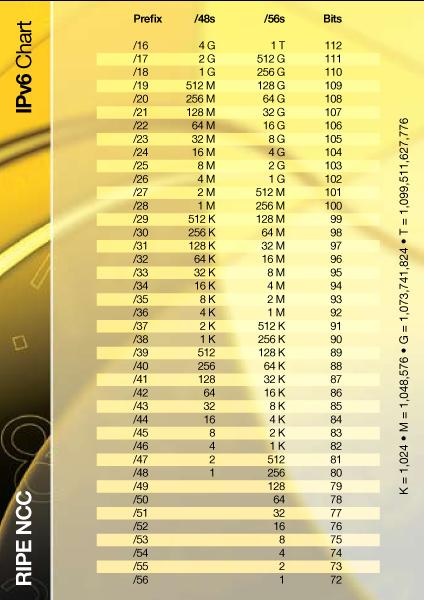|
Jysk IT-Tech |
|||
|
Din lokale IT mand. |
|||
 |
|
|
||||||||||||||||
|
|
IPv6
IPv6 is similar to IPv4, but it is structured so that all LANs have 64 bits of network prefix as opposed to the variable length of network prefix1 that IPv4 networks have. All IPv6 networks have space for 18,446,744,073,709,551,616 IPv6 addresses. Currently, most ISPs assign /48 network prefixes to subscribers sites (the End Users networks). Because all IPv6 netwoks have /64 prefixes, a /48 network prefix allows 65,536 LANs in an End User site |
|||||||||||||||||||||||||
 |
|||||||||||||||||||||||||
|
The current minimum IPv6 allocation made by the RIPE NCC is a /32 network prefix. If the LIR only made /48 assignments from they would be able to make 65,536 /48 assignments. If they decided to only assign /56 network prefixes they would have 24 bits For example, if a /24 IPv6 allocation is made to an LIR, it would be able to make 16,777,216 /48 assignments or 4,294,967,296 /56 To give some perspective, it is worth noting that there are 4,294,967,296 IPv4 addresses in total, significantly less than the IPv6 Relative Network Sizes
|
|||||||||||||||||||||||||
|
© Copyrigth 2015 - Jysk IT-Tech - All rights reserved |
|||||||||||||||||||||||||